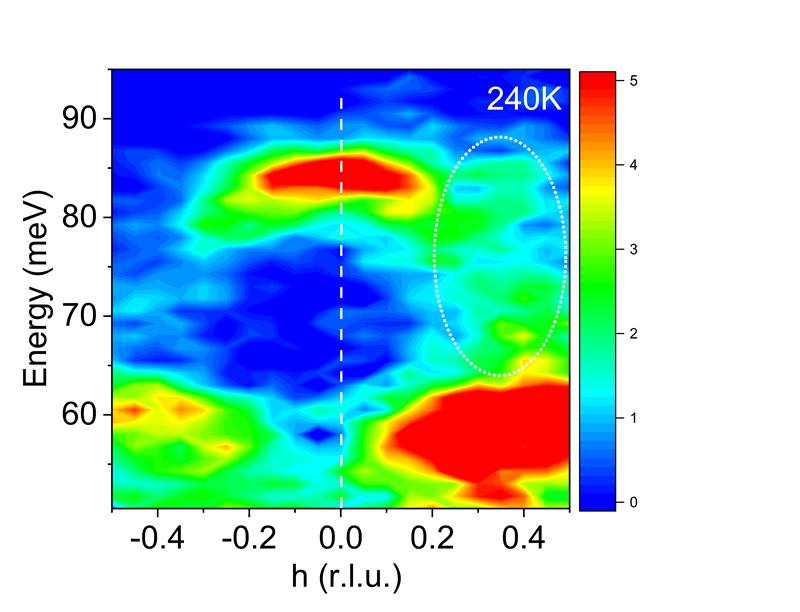The Science
New research sheds light on the mechanism behind how a special material changes from an electrically conducting metal to an electric insulator. The researchers studied lanthanum strontium nickel oxide (La1.67Sr0.33NiO4) derived from a quantum material La2NiO4. Quantum materials have unusual properties that result from how their electrons interact. Below a critical temperature, the strontium doped material is an insulator. This is due to the separation of introduced holes from the magnetic regions, forming “stripes.” As the temperature increases, these stripes fluctuate and melt at 240K. At this temperature, researchers expected the material to become a conducting metal. Instead, it remains an insulating material. Neutron scattering sheds light on this intriguing phenomenon. The results indicate that the material stays an insulator because of certain atomic vibrations that trap electrons and thus impede electrical conduction.
The Impact
Quantum materials have properties that aren’t predicted by the parts that make up those materials. For example, they can transition from metals to insulators or act as superconductors. They hold tremendous promise for applications in science and technology. This research describes the tunability of electron-phonon interaction on the metal-insulator transition in one quantum material. The results will help validate theoretical models of materials that have strongly interacting electrons. These theories will help scientists design new quantum materials for future technologies.
Summary
In metals, electrons can be considered as free particles flying along trajectories enforced by the crystal structure. In recent decades, scientists discovered new materials where electrons strongly repel each other and bounce off atomic vibrations in the host crystal. These materials exhibit unusual and technologically useful properties. These properties can include dramatic electrical resistance drop in magnetic fields, electron conduction only on the surface, and high temperature superconductivity. Understanding these properties in different materials remains a grand challenge for the scientific community.
This work used high intensity neutron beams at the Spallation Neutron Source, a Department of Energy user facility at Oak Ridge National Laboratory (ORNL), to look deep inside an archetype quantum material La2NiO4 in which one sixth of the lanthanum (La) atoms are replaced with strontium (Sr) atoms (La1.67Sr0.33NiO4). The team included researchers from the University of Colorado Boulder, ORNL, Brookhaven National Laboratory, and the RIKEN Center for Emergent Matter Science in Japan. These materials are insulating at low temperatures due to the so-called “stripe” order that results from the complex interplay between electronic spins and the holes introduced due to strontium doping. The doped material is expected to become metallic above 240K when the stripes melt. However, the material remains insulating. The collaboration uncovered strong friction between the holes and certain vibrations of oxygen ions and found evidence for this interaction in other materials of similar structure. The microscopic mechanism could pave way for the design of new materials with unusual properties useful for various quantum technologies.
Contact
Dmitry Reznik
University of Colorado-Boulder
Dmitry.Reznik@Colorado.edu
Funding
Work at the University of Colorado Boulder was supported by the Department of Energy Office of Science, Basic Energy Sciences program. One of the researchers was supported by a Japan Science and Technology Agency CREST Grant. Work at Brookhaven National Laboratory was supported by the Department of Energy Office of Science, Basic Energy Sciences program.
Publications
Merritt, A. M., et al., Giant electron-phonon coupling of the breathing plane oxygen phonons in the dynamic stripe phase of La1.67Sr0.33NiO4. Scientific Reports 10, 11426 (2020). [DOI:10.1038/s41598-020-67963-x]
Scraped from https://www.sourcearu.com
